Black Decker TV910 Bruksanvisning
Black Decker
såg
TV910
Läs gratis den bruksanvisning för Black Decker TV910 (4 sidor) i kategorin såg. Guiden har ansetts hjälpsam av 30 personer och har ett genomsnittsbetyg på 5.0 stjärnor baserat på 15.5 recensioner. Har du en fråga om Black Decker TV910 eller vill du ställa frågor till andra användare av produkten? Ställ en fråga
Sida 1/4

WARNING: Read and understand all instructions. Failure to follow all instructions listed
below may result in electric shock, fire and/or serious personal injury.
SAVE THESE INSTRUCTIONS
Work Area
• Keep your work area clean and well lit. Cluttered benches and dark areas invite accidents.
• Do not operate power tools in explosive atmospheres, such as in the presence of
flammable liquids, gases, or dust. Power tools create sparks which may ignite the dust or
fumes. Use in well ventilated areas only.
• Keep bystanders, children, and visitors away while operating a power tool.
Distractions can cause you to lose control.
Electrical Safety
• Double insulated tools are equipped with a polarized plug (one blade is wider than the
other.) This plug will fit in a polarized outlet only one way. If the plug does not fit fully
in the outlet, reverse the plug. If it still does not fit, contact a qualified electrician to
install a polarized outlet. Do not change the plug in any way. Double insulation
eliminates the need for the three wire grounded power cord and grounded power supply
system.
• Avoid body contact with grounded surfaces such as pipes, radiators, ranges and
refrigerators. There is an increased risk of electric shock if your body is grounded.
• Don’t expose power tools to rain or wet conditions. Water entering a power tool will
increase the risk of electric shock.
• Do not abuse the cord. Never use the cord to carry the tools or pull the plug from an
outlet. Keep cord away from heat, oil, sharp edges or moving parts. Replace damaged
cords immediately. Damaged cords increase the risk of electric shock.
• When operating a power tool outside, use an outdoor extension cord marked "W-A"
or "W." These cords are rated for outdoor use and reduce the risk of electric shock.
Personal Safety
• Stay alert, watch what you are doing and use common sense when operating a power
tool. Do not use tool while tired or under the influence of drugs, alcohol, or
medication. A moment of inattention while operating power tools may result in serious
personal injury.
• Dress properly. Do not wear loose clothing or jewelry. Contain long hair. Keep your
hair, clothing, and gloves away from moving parts. Loose clothing, jewelry, or long hair
can be caught in moving parts. Air vents cover moving parts and should be avoided.
• Avoid accidental starting. Be sure switch is off before plugging in. Carrying tools with
your finger on the switch or plugging in tools that have the switch on invites accidents.
• Remove adjusting keys or wrenches before turning the tool on. A wrench or key that is
left attached to a rotating part of the tool may result in personal injury.
• Do not overreach. Keep proper footing and balance at all times. Proper footing and
balance enables better control of the tool in unexpected situations.
• Use safety equipment. Always wear eye protection. Dust mask, non-skid safety shoes,
hard hat, or hearing protection must be used for appropriate conditions.
Tool Use and Care
• Use clamps or other practical way to secure and support the workpiece to a stable
platform. Holding the work by hand or against your body is unstable and may lead to loss
of control.
• Do not force tool. Use the correct tool for your application. The correct tool will do the
job better and safer at the rate for which it is designed.
• Do not use tool if switch does not turn it on or off. Any tool that cannot be controlled with
the switch is dangerous and must be repaired.
• Disconnect the plug from the power source before making any adjustments,
changing accessories, or storing the tool. Such preventative safety measures reduce
the risk of starting the tool accidentally.
• Store idle tools out of reach of children and other untrained persons. Tools are
dangerous in the hands of untrained users.
• Maintain tools with care. Keep cutting tools sharp and clean. Properly maintained
tools, with sharp cutting edges are less likely to bind and are easier to control.
• Check for misalignment or binding of moving parts, breakage of parts, and any other
condition that may affect the tools operation. If damaged, have the tool serviced
before using. Many accidents are caused by poorly maintained tools.
• Use only accessories that are recommended by the manufacturer for your model.
Accessories that may be suitable for one tool, may become hazardous when used on
another tool.
Service
• Tool service must be performed only by qualified repair personnel. Service or
maintenance performed by unqualified personnel could result in a risk of injury.
• When servicing a tool, use only identical replacement parts. Follow instructions in the
Maintenance section of this manual. Use of unauthorized parts or failure to follow
Maintenance Instructions may create a risk of electric shock or injury.
Specific Safety Rules
• Hold tool by insulated gripping surfaces when performing an operation where the
cutting tool may contact hidden wiring or its own cord. Contact with a "live" wire will
make exposed metal parts of the tool "live" and shock the operator.
• Keep hands away from cutting area. Never reach underneath the material for any reason.
Hold front of saw by grasping the contoured gripping area. Do not insert fingers or thumb into
the vicinity of the reciprocating blade and blade clamp. Do not stabilize the saw by gripping
the shoe.
• Keep blades sharp. Dull blades may cause the saw to swerve or stall under pressure.
• Use extra caution when cutting overhead and pay particular attention to overhead wires
which may be hidden from view. Anticipate the path of falling branches and debris ahead of
time.
• When cutting pipe or conduit ensure that they are free from water, electrical wiring, etc.
WARNING: Some dust created by power sanding, sawing, grinding, drilling, and other
construction activities contains chemicals known to cause cancer, birth defects or other
reproductive harm. Some examples of these chemicals are:
• lead from lead-based paints,
• crystalline silica from bricks and cement and other masonry products, and
• arsenic and chromium from chemically-treated lumber (CCA).
Your risk from these exposures varies, depending on how often you do this type of work. To
reduce your exposure to these chemicals: work in a well ventilated area, and work with
approved safety equipment, such as those dust masks that are specially designed to filter
out microscopic particles.
• Avoid prolonged contact with dust from power sanding, sawing, grinding, drilling, and
other construction activities. Wear protective clothing and wash exposed areas with
soap and water. Allowing dust to get into your mouth, eyes, or lay on the skin may promote
absorption of harmful chemicals.
CAUTION: Wear appropriate hearing protection during use. Under some conditions
and duration of use, noise from this product may contribute to hearing loss.
The label on your tool may include the following symbols.
V..............volts
A..............amperes
Hz............hertz
W ............watts
min ..........minutes
............alternating current
........direct current
n
o
............no load speed
............Class II Construction
SPM ........strokes per minute
............earthing terminal
............safety alert symbol
®
Fig. 2
BLADE CLAMP
SERRE-LAME
SUJETADOR DE LA
SEGUETA
RECIPROCATING SHAFT
ARBRE À MOUVEMENT ALTERNATIF
EJE ALTERNATIVO
SET SCREW
VIS DE FIXATION
PRISIONERO
BLADE
LAME
CUCHILLA
PIN ON SHAFT
ERGOT SUR L'ARBRE
PERNO EN EL EJE
®
Fig. 4
®
®
Fig. 5
Fig. 3
USE OF EXTENSION CORDS
Make sure the extension cord is in good condition before using. Always use the proper size
extension cords with the tool – that is, proper wire size for various lengths of cord and heavy
enough to carry the current the tool will draw. Use of an undersized cord will cause a drop in
line voltage resulting in loss of power and overheating. For proper size cords see chart
below.
INFORMATION YOU SHOULD KNOW
• Securely tighten blade.
• Keep shoe firmly against work surface.
VEA EL ESPAÑOL EN LA CONTRAPORTADA.
SAVE THIS MANUAL FOR FUTURE REFERENCE.
INSTRUCTIVO DE OPERACIÓN, CENTROS DE SERVICIO Y PÓLIZADE GARANTÍA.
ADVERTENCIA: LÉASE ESTE INSTRUCTIVO ANTES DE USAR EL PRODUCTO.
CAT. NO. TV910 FORM NO. 612873-00 (DEC-02-1) Printed in China
Fig. 6
®
Catalog Number TV910
®
1-800-544-6986
V
V
A
A
R
R
I
I
A
A
B
B
L
L
E
E
S
S
P
P
E
E
E
E
D
D
R
R
E
E
C
C
I
I
P
P
R
R
O
O
C
C
A
A
T
T
I
I
N
N
G
G
S
S
A
A
W
W
INSTRUCTION MANUAL
Minimum Gage for Cord Sets
Volts Total Length of Cord in Feet
120V 0-25 26-50 51-100 101-150
240V 0-50 51-100 101-200 201-300
Ampere Rating
More Not more American Wire Gage
Than Than
0-6 18 16 16 14
6 - 10 18 16 14 12
10 - 12 16 16 14 12
12 - 16 14 12 Not Recommended
SET SCREW
VIS DE FIXATION
PRISIONERO
TRIGGER SWITCH
INTERRUPTEUR À DÉTENTE
GATILLO INTERRUPTOR
Fig. 1
(SHOE AND HOUSING CUT AWAY FOR CLARITY)
(SEMELLE ET LOGEMENT RETIRÉS POUR PLUS DE CLARTÉ)
(CORTE DE PLATAFORMA Y ALMACENAMIENTO
PARA CLARIDAD)
Produktspecifikationer
| Varumärke: | Black Decker |
| Kategori: | såg |
| Modell: | TV910 |
Behöver du hjälp?
Om du behöver hjälp med Black Decker TV910 ställ en fråga nedan och andra användare kommer att svara dig
såg Black Decker Manualer

16 September 2025
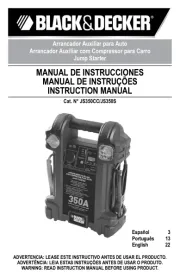
5 September 2025
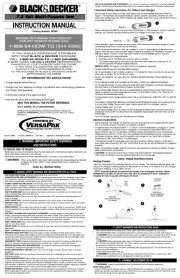
4 September 2025
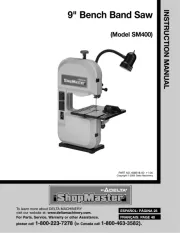
4 September 2025
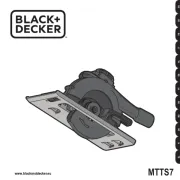
4 September 2025
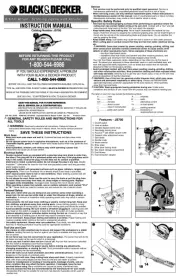
4 September 2025
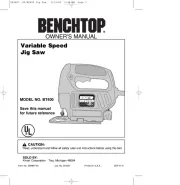
3 September 2025
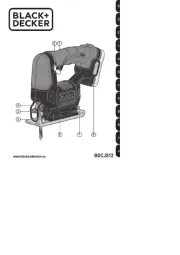
3 September 2025

3 September 2025
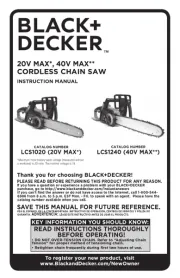
3 September 2025
såg Manualer
- Ozito
- Toolson
- Solo
- Full Boar
- Verto
- Fuxtec
- Cecotec
- Gardenline
- IKRA
- Maestro
- Snow Joe
- Bosch
- Draper
- Topex
- Texas
Nyaste såg Manualer
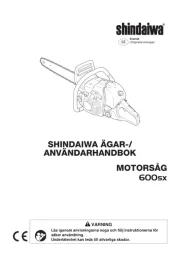
18 Oktober 2025
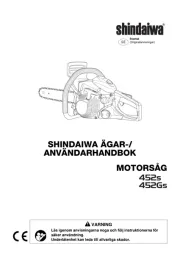
16 Oktober 2025
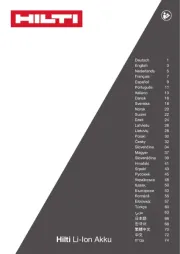
15 Oktober 2025
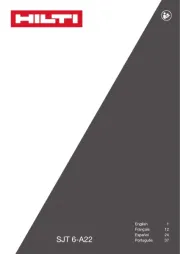
14 Oktober 2025
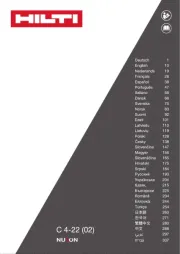
14 Oktober 2025

14 Oktober 2025
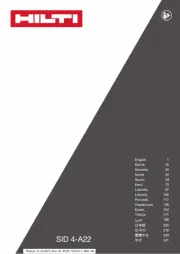
14 Oktober 2025

14 Oktober 2025
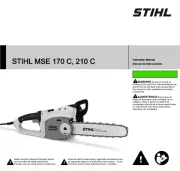
13 Oktober 2025
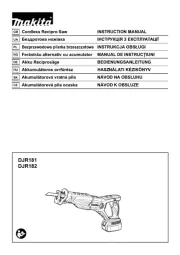
13 Oktober 2025